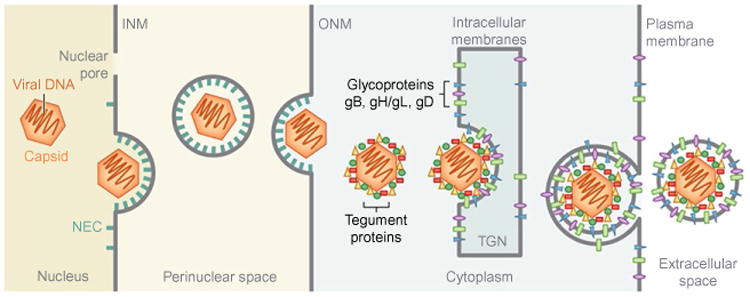Fig. 1.

Herpesvirus egress. Herpesviruses assemble their capsids and package their DNA genome in the nucleus. Nucleocapsids bud at the inner nuclear membrane (INM), with the help of the nuclear egress complex (NEC), to form the perinuclear viral particles, which fuse with the outer nuclear membrane (ONM). As the result, the capsids are released into the cytoplasm where they undergo further maturation steps, e.g., assembly of a tegument layer around the capsids. During the second budding event, at the cytoplasmic membranes derived from the Trans-Golgi Network or early endosomes, the capsids acquire their final lipid envelope, which contains glycoproteins required for cell entry. The mature capsids are released from the cell through the secretory pathway. Reprinted from Bigalke, J.M., Heldwein, E.E., 2016. Nuclear exodus: herpesviruses lead the way. Annu. Rev. Virol., 3.
